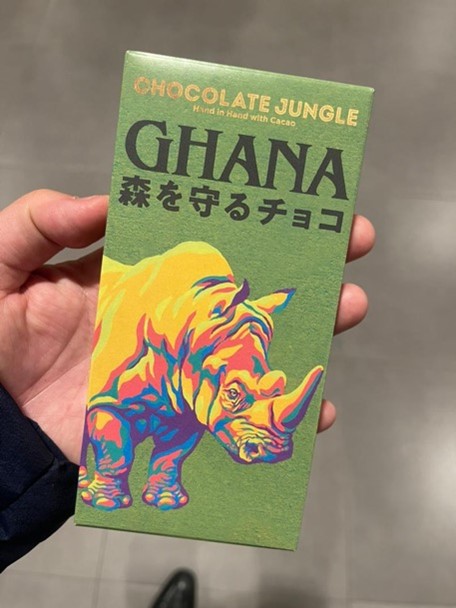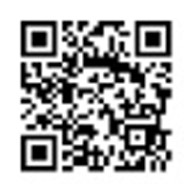- Knowledge Overview
-
The QR code, an acronym for the Quick Response code, is a technology developed by Denso Wave Inc, a Japanese company. It is a convenient technology that allows anyone to instantly access information sources by reading the QR code with a device such as a smartphone.
The product’s features include: 1) the capacity to convey substantial amounts of information using a compact code, 2) the capability to display content efficiently in confined space, 3) the ability to be read from any direction (360°) and 4) the resilience to withstand dirt and damage of the code.
QR codes are used in various daily situations and have become familiar to users. They can inform consumers about the producer, production area, processing process, ingredients, and other product distribution and manufacturing processes; hence, they are being increasingly introduced in traceability fields.
- Background (history and development)
-
The QR code (2D barcode) is a Japanese technology developed by Denso Wave in 1994. Because the company made it patent-free, it has become a worldwide technology. As long as a user follows the QR code standards established by the JIS, ISO, etc., no application or license agreement is required for its use; it can be used free of charge.
Regarding QR code generation, Denso Wave has released a service that allows users to generate QR codes for free (Kurukuru Manager: https://m.qrqrq.com/). There are many other free QR code generation services available.
- How to Apply Knowledge
-
While many services are available for generating QR codes, but this section will explain the procedure for using the Kurukuru Manager service provided by DENSO WAVE (https://m.qrqrq.com/).
- Enter the URL and text you want to turn into a QR code in the input field, and press the “Create” button to create a QR code.
- Download the QR code in a format such as PNG or JPEG.
- Place the QR code on a printed material or display it on a mobile device.
- You can read the QR code with a QR code reader or smartphone to read the coded information.
West Africa produces two-thirds of the world’s cacao beans, with Côte d’Ivoire ranking first, at 39%, and Ghana ranking second, at 15%. In these countries, 37% (Côte d’Ivoire) and over 13% (Ghana) of deforestation in protected forest areas are reportedly related to cacao cultivation. When applying the system, information on cacao producers and production areas is registered on a traceable system. In this system, intermediaries input information about the producer, purchase quantity, location of the field, and other details when procuring cacao beans, allowing trading companies and chocolate companies to track where the beans came from. This information is compiled into a database, the URL of the database is converted into a QR code, and a QR code is attached to each jute bag of cacao, making it possible to immediately identify which producer and production area the beans came from.
Moreover, a website will be created to disseminate information about producers and production areas, and the URL will be converted into a QR code, allowing end consumers to easily access the information. The QR code will be printed on chocolate packages and flyers, as well as posted on related websites.

The first chocolate with guaranteed traceability from Ghana (Tachibana Shoten)

Chocolanavi: https://suit-chocolate.com/jan-015/ QR code - Examples of Applying Knowledge
-
QR codes are used in many situations. For example, they are used for mobile membership cards and admission tickets, as well as for exchanging social media accounts, managing prescriptions at medical facilities, making cashless payments, directing customers to online menus at restaurants, and for process charts and inventory management in factories. Smartphones are also widespread in developing countries, allowing the country of production to check QR codes.
- Positioning and Characteristics of Knowledge in Japan
-
QR codes are used widely in Japan and worldwide, including in daily activities to business settings, and have already become an indispensable technology in everyday life. They are used in many places, such as restaurants, leisure facilities, and transportation, and for making payments. Moreover, since QR codes are free and easy to generate, even ordinary people can easily generate and use them. Recently, an increasing number of products, such as coffee and clothing, have been fitted with QR tags that allow information on the producers and production areas of the raw materials to be traced, marking the introduction of QR codes into the field of traceability.
A similar 2D barcode format called GS1 DataMatrix is also used internationally. Barcodes are standardized and managed by an international organization called GS1, and Japan is a member of the organization as “GS1 Japan.” The QR code is registered as a global standard.
- Owners/inheritors of knowledge
- DENSO WAVE INC.
- Related URLs (in Japanese)
-
- Contact information for QR codes (DENSO WAVE)
https://www.denso-wave.com/ja/system/qr/inquiry/?answer1=%e3%81%8a%e5%95%8f%e5%90%88%e3%81%9b - GS1 Japan
https://www.gs1jp.org/
- Contact information for QR codes (DENSO WAVE)
- Related URLs (in Japanese)
-
- DENSO WAVE Company Website (QR Code Solutions): https://www.denso-wave.com/ja/system/qr/
- Masahiro Hara, Development and Popularization of QR Codes – Code Development Pursuing Easy Reading and Market Formation through Open Strategy, Synthesiology Vol. 12 No. 1 (2019)
https://www.jstage.jst.go.jp/article/synth/12/1/12_19/_pdf/-char/ja - Nature Food: Agriculture: Cocoa cultivation is driving deforestation in two West African countries
https://www.natureasia.com/ja-jp/research/highlight/14499 - Barcodes
https://www.gs1jp.org/standard/barcode/index.html
- Other
-
Upon use, it is recommended that the registered trademark statement be included.
Your Knowledge could start making a change, when issue is faced; in forest conservation, or in value chains to use forest resources in a sustainable way.


Your Feedback.